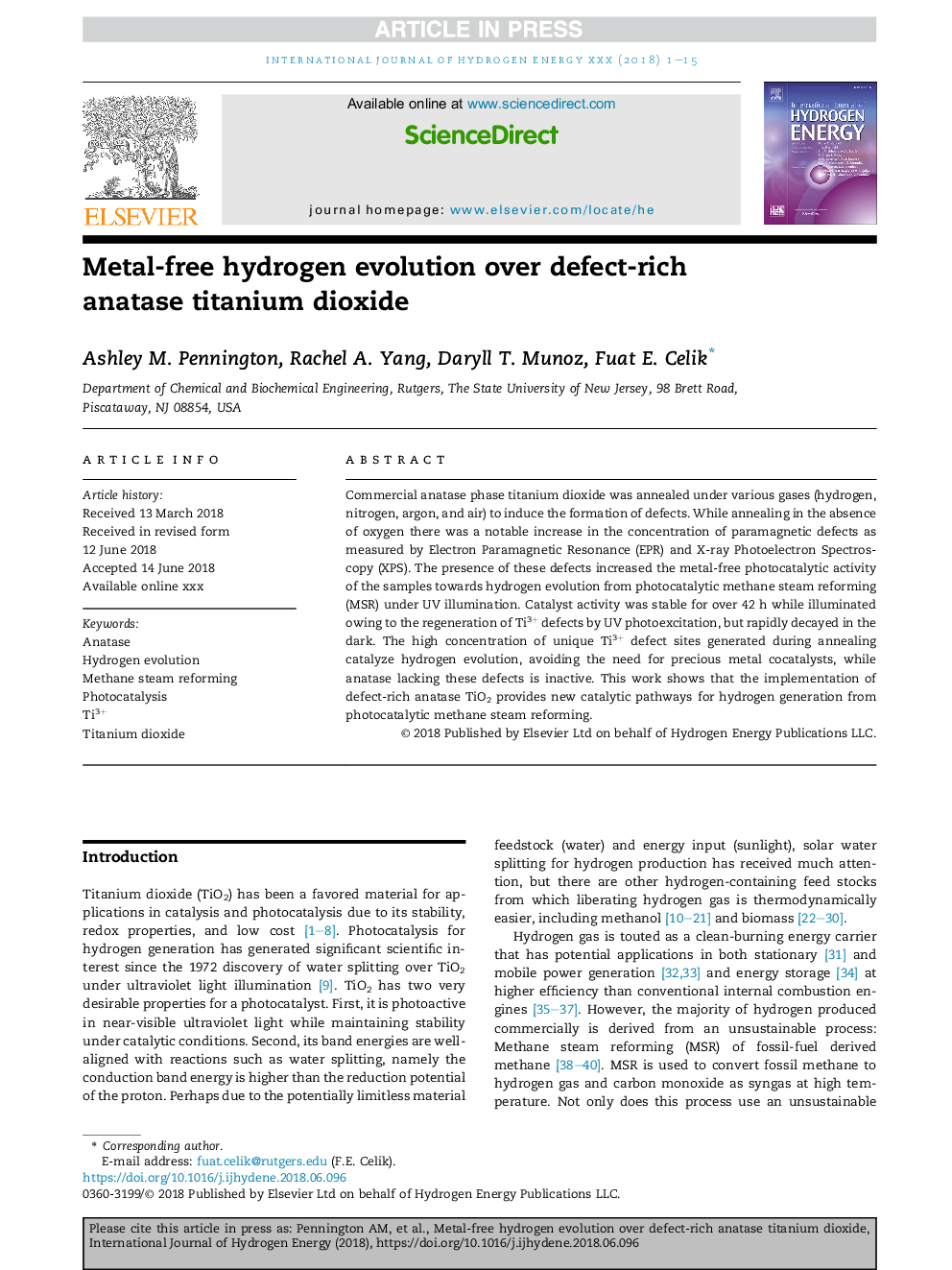| Article ID | Journal | Published Year | Pages | File Type |
|---|---|---|---|---|
| 7705279 | International Journal of Hydrogen Energy | 2018 | 15 Pages |
Abstract
Commercial anatase phase titanium dioxide was annealed under various gases (hydrogen, nitrogen, argon, and air) to induce the formation of defects. While annealing in the absence of oxygen there was a notable increase in the concentration of paramagnetic defects as measured by Electron Paramagnetic Resonance (EPR) and X-ray Photoelectron Spectroscopy (XPS). The presence of these defects increased the metal-free photocatalytic activity of the samples towards hydrogen evolution from photocatalytic methane steam reforming (MSR) under UV illumination. Catalyst activity was stable for over 42Â h while illuminated owing to the regeneration of Ti3+ defects by UV photoexcitation, but rapidly decayed in the dark. The high concentration of unique Ti3+ defect sites generated during annealing catalyze hydrogen evolution, avoiding the need for precious metal cocatalysts, while anatase lacking these defects is inactive. This work shows that the implementation of defect-rich anatase TiO2 provides new catalytic pathways for hydrogen generation from photocatalytic methane steam reforming.
Related Topics
Physical Sciences and Engineering
Chemistry
Electrochemistry
Authors
Ashley M. Pennington, Rachel A. Yang, Daryll T. Munoz, Fuat E. Celik,
